Can You Roll Back a Drive Format on Ssd
Here is a situation that we all hope we do not ever have to face. You find that an important hard drive has been formatted and now the data is inaccessible. Perhaps the drive was formatted inadvertently, or it could have been done purposely before you realized that you needed files that were resident on the drive. In some cases, you may have formatted to change file systems, run into issues, and now have to recover files from a formatted hard drive.
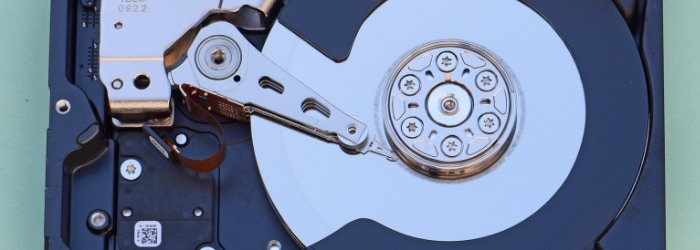
No matter how you arrived at this point, the fact is that now to regain access to the data you need to recover data from a hard disk after formatting. Don't panic, there are some options available to you that can restore your system to full operational order.
What Does Formatting Do to Your Files?
Let's take a minute to understand what exactly formatting your hard drive does to your hard disk. When you format a hard drive, the operating system loses its ability to reference the data on the disk. Until the particular drive sectors are overwritten, there is still a chance to recover a formatted hard drive.
The files and data are still there, but just cannot be accessed by your operating system. The only thing that formatting accomplishes is to eliminate the pointers that exist that tell your operating system where the files are physically located. If you can recover those pointers then you can access your data again.
Why Is Formatting Sometimes Necessary?
It's easy to see formatting as a destructive operation that causes more harm than good, but that's not really the case. In reality, formatting is essential for hard drives to be usable. An unformatted hard drive can't be used to store files because modern operating systems follow certain file storage conventions and can communicate only with storage devices that have a corresponding file system.
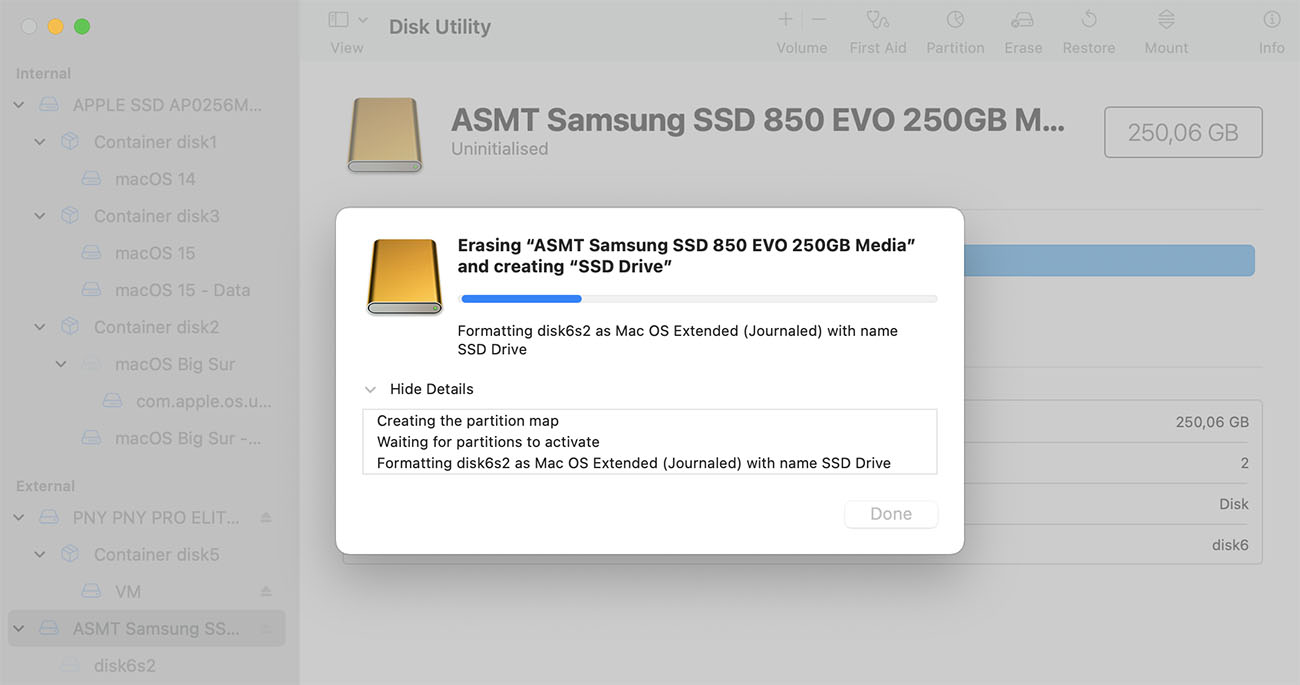
The problem is that both modern hard drives and their file systems can be damaged, making formatting a necessary step for making the storage device usable again. Here are the most common reasons why users need to sometimes format their hard drives:
- 🕛 Performance issues: Storage devices, especially older spinning hard drives, may start showing signs of performance degradation over time. Data fragmentation is a common culprit, but it's not the only one. In many situations, formatting is the simplest and most effective way to restore a slow hard drive to its original performance.
- 💾 File access issues: Modern file systems support complex file access management to ensure that only authorized users can access certain data. But where there's complexity, there are potential issues. While virtually all file access issues can be solved without formatting, it's often much quicker to move the affected files elsewhere, format the storage device, and move them back.
- 🗄️ File system change: Not all operating systems and devices support the same file systems, which is why you might need to format your storage device when switching from, let's say, Windows to macOS or macOS to Linux.
- 🐛 Malware: Modern malware is far more sinister than computer viruses from the 90s. Ransomware can encrypt your entire hard drive without you even noticing, forcing you to format it from scratch to make it usable again.
- 🛑 Data corruption: Data can become corrupted for a number of different reasons. In extreme cases, data corruption may affect even the file system structure itself, requiring you to format the entire hard drive just so you can use it again.
The Importance of Backups
Viable backups of all of your internal and external hard drives can lead to a simple recovery in the case of inadvertent or problematic formatting. Backups are a critical component of keeping your computing environment safe and should be done regularly. Depending on the nature of your data, you may need to adjust your backup schedule to allow you to restore the data required.
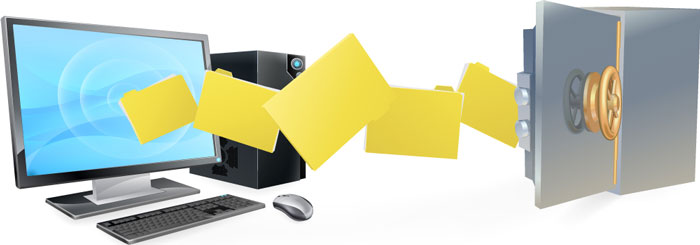
In cases of static data, backups can be performed periodically. More dynamic data needs to be backed up at least daily, and in the case of mission-critical data such as from brokerage houses or banks, may be constantly backed up and mirrored to another location for immediate recovery purposes.
Main Types of Backups
Any backup is infinitely better than no backup at all, but there's no denying that some types of backups are more suitable for protecting certain types of files than others. Let's take a quick look at the main backup types you can choose from when deciding how to protect your files:
- Manual local backups: Being the simples backup option available, manual local backups involve copying files from one storage device, such as an internal hard drive, to another one, such as a USB flash drive. The biggest weakness of manual local backups is the human performing them. Why? Because our busy lives make it very easy to forget that it's time to create a new backup, and the consequences of even one missed backup can be devastating.
- Automatic local backups: The good news is that automating the creation of backups is very easy thanks to software applications such as Time Machine (macOS) or File History (Windows). As a user, all you need to do is tell your backup application which files you wish to make copies of, select a suitable backup destination, and kick back.
- Cloud backups: As convenient as automatic local backups are, they don't protect you against natural disasters and other catastrophic events capable of compromising not only the original copies of your data but also all backup storage devices located in the same area. Cloud backup solutions, such as Microsoft OneDrive or Apple iCloud, solve this problem by automatically transferring files offsite.
- Full-disk backups: When an entire system hard drive decides to stop working, it's useful to have a full-disk backup that lets you recover the entire operating system, along with all your data, at hand. Because full-disk backups take a relatively long time to create, you can choose a lower backup frequency, such as once every month.
- RAID backups: RAID arrays provide an interesting alternative to traditional data backups by increasing the number of hard drives that would have to fail for your to experience data loss. For example, RAID 1 lets you mirror your data to two hard drives simultaneously, effectively lowering by 50 percent.
Backup Recovery
Backups can be restored to your formatted drive with complete success as long as the backups were completed without errors. In fact, this is the preferred method of recovering large installations during disaster recovery tests. Clean, formatted disks are used as the foundation for large-scale recovery operations.
Facilities that perform disaster recovery continually reuse the same hardware, including disk drives. After one customer's recovery is complete, all drives are formatted and overwritten. The next customer arrives with their backup media and can restore all of their files and data, enabling their system to get up and running. This procedure can work on your individual system as well.
If you are restoring all or part of your hard drive from previous backups that you have taken, these are the steps to follow using your backup software package.
To recover data from a formatted hard drive using your backups:
- Identify the file systems, files or the complete HDD that you want to recover.
- Find the correct backup image to use for your recovery. In many cases, this will be the most recent backup available, but in some instances, you may want to revert to older versions of your files.
- Start recovering by initiating the recovery procedure from within your backup/recovery tool, and have it retrieve the list of files that you have identified.
- When the process is complete, check your files to ensure that everything is as it should be. In the case of a damaged file, you may need to run another recovery on that file using a different or older set of backup media.
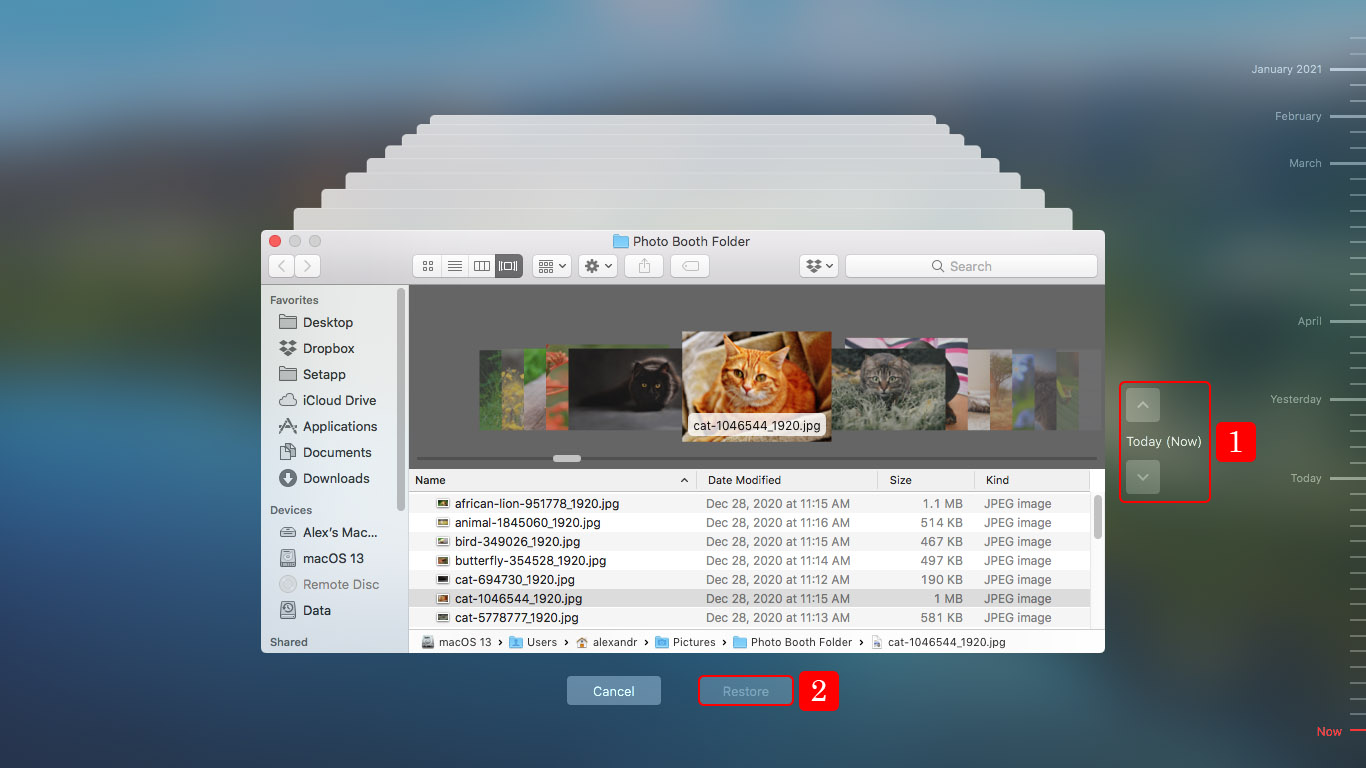
Formatted Hard Drive Recovery Without Backups
Backups are great to have and can be instrumental in recovering files from a formatted hard drive, but good backups are not always available. In some cases, a user may never back up their computer at all. What can you do if you find you need to recover data from a hard drive after formatting the device? Are your files lost forever?
There is a way to enact a formatted hard drive recovery without using backups.
You will need to employ a software tool that can assist you in recovering your data.
If you choose the right software tool and begin the recovery process soon enough (before new data is stored on the formatted hard drive), you might be able to recover all formatted partitions, and your files with them. What's more, recovering entire partitions is typically quicker than what it takes to recover individual files. Why? Because the data recovery tool doesn't have to analyze the entire hard drive. Instead, it only needs to find the beginning and end of the partitional, knowing all data is still physically located somewhere within this space.
There are a number of data recovery software tools available for recovering on both Mac and Windows platforms.
Disk Drill is an excellent option when looking for an answer as to how to recover a formatted hard drive.
There is a free download available so you can try the tool and see what it can do for you. Let's take look at how you would use Disk Drill to regain access to your drive and files.
Free Download
How to Recover Data From a Formatted Hard Drive Using Disk Drill
When you are in need of a data recovery tool, the last thing you want to do is to be faced with a complicated recovery process. The fact that you are trying to recover potentially lost files is stressful enough without having to deal with unwieldy instructions and procedures.
Disk Drill offers a very simple, yet effective, way to identify the files that can be recovered and to actually recover them.
Follow the steps below to put Disk Drill to work recovering your data. We will be focusing on a Mac recovery, but similar steps will work to recover files on your Windows operating system as well.
To Recover Deleted Files from a Formatted Hard Drive:
- Download the free version of Disk Drill. Click on the diskdrill.dmg file to install the tool and then move Disk Drill to your application folder.
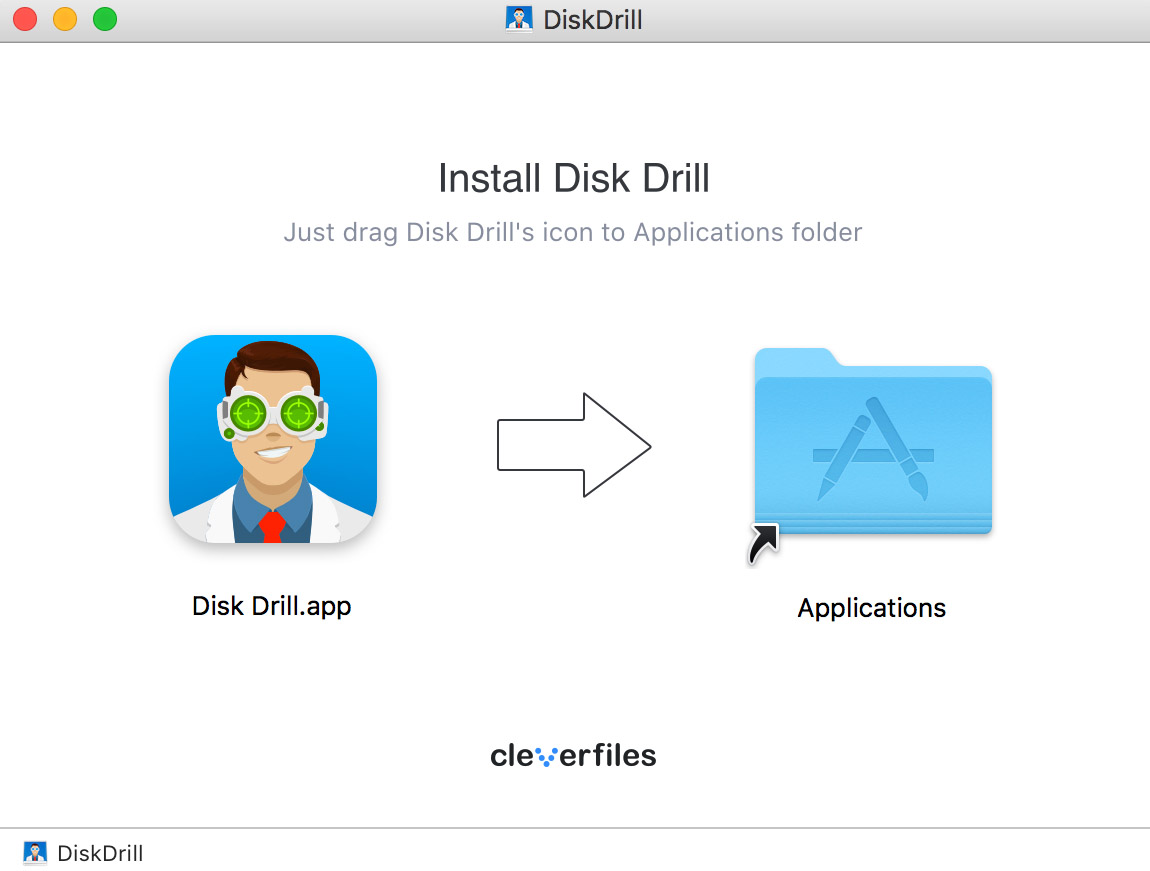 Click on the Disk Drill icon to launch the software utility. ❗ You need to be an administrator as the tool will install a new driver and needs full control to do its work.
Click on the Disk Drill icon to launch the software utility. ❗ You need to be an administrator as the tool will install a new driver and needs full control to do its work.
Data recovery for free
Your Companion for Deleted Files RecoveryFree Download
- Make sure that the drive that you want to recover is attached to your machine. Once you launch Disk Drill, it will display the drives that it can access.
- Click on the 'Search for lost data' button for the drive you wish to work with. Disk Drill will inform you if you need to make changes before proceeding, such as GrantingFull Disk Accessin the latest version ofmacOS Bis Sur. It will then go through all of its scanning options to find any files that can be recovered.
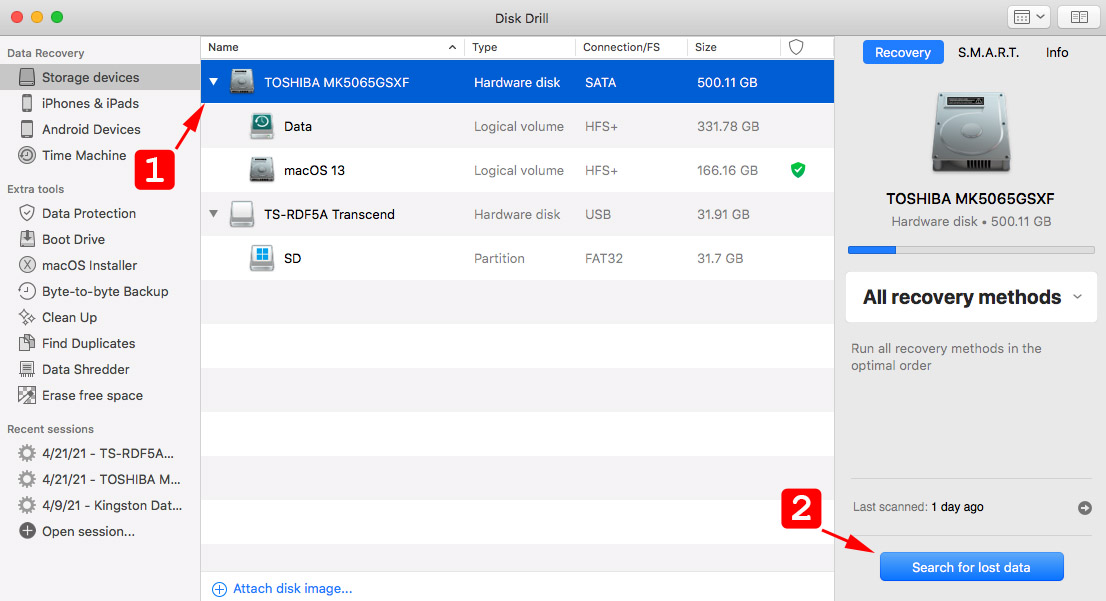
- Preview the files you found. Click on the 'eye' icon next to your file to preview.
- Recover your deleted files. Simply choose the files that you want to recover from the potentially recoverable files that are displayed by Disk Drill. The tool will restore the files if possible.
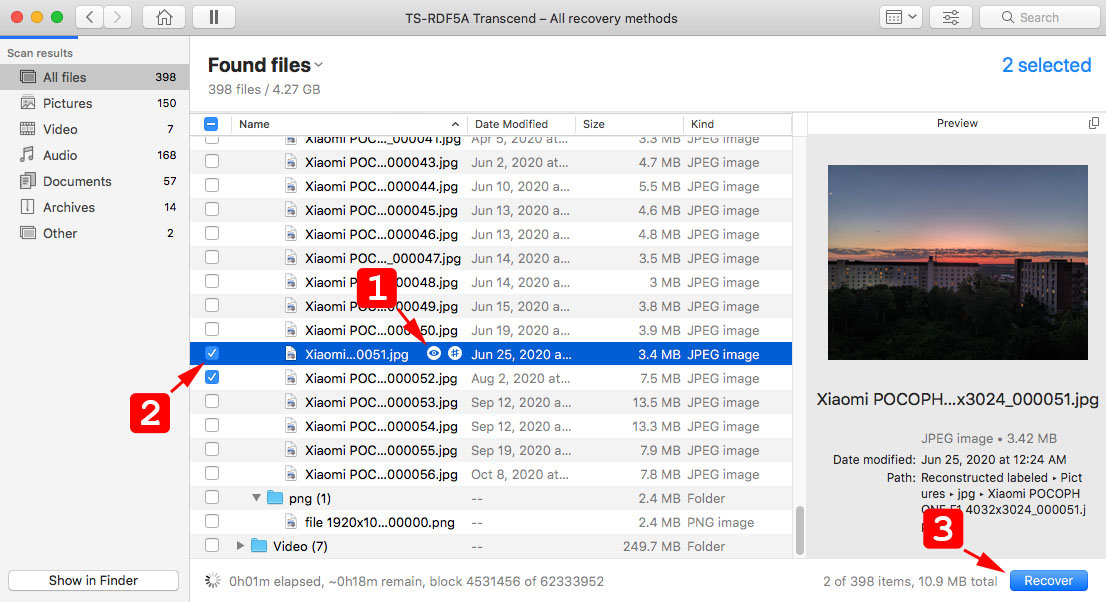
In the case of physical damage to sectors on your drive, some files may not be able to be recovered. In most other cases, Disk Drill can recognize and recover files in over 400 different file formats.
Cases When It Is Impossible to Recover Data from HDD
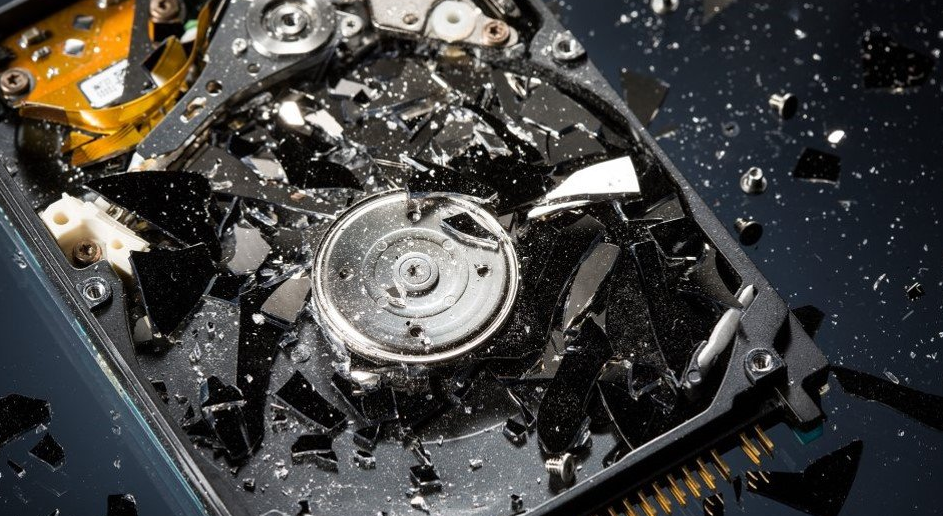
As we've described in this article, it's often possible to recover data from a formatted hard drive even without a backup. Often but definitely not always. There are several data loss situations that are impossible to recover from even with the best data recovery software available:
- Physical damage: Hard drives are fragile devices, and they don't like being dropped, smashed, or exposed to extreme temperatures. When something breaks, it's not always possible to repair the damage and recover the lost data, so you need to be extra careful, especially when handling a disconnected hard drive.
- TRIM-enabled SSDs: Modern SSDs offer wonderful data transfer speeds, which have been, in part, made possible thanks to TRIM. What's TRIM? A performance-enhancing feature supported by SSDs that allows an operating system to proactively wipe deleted data to prepare the blocks on which the data was stored for new files. Unfortunately, data that has once been wiped can't be recovered.
- Secure formatting: When formatting a storage device that you want to sell or give to someone else, it's always a good idea to perform what's called secure formatting, which involves overwriting the formatted storage device with random data. Because secure formatting does exactly what it promises, it's impossible for data recovery software to retrieve any data from securely formatted storage devices.
A professional data recovery service may be able to help you with some of these causes of data loss, especially physical damage, but don't expect guaranteed results. Because lost data can sometimes be impossible to recover, you should proactively check the status of your hard drive from time to time, and we explain how in the next section of this article.
How to Check the Status of Your Disk
One thing that's great about modern hard drives is that they are capable of monitoring and reporting their condition through Self-Monitoring, Analysis, and Reporting Technology (S.M.A.R.T.), which is a monitoring system whose primary job is to indicate a possible imminent drive failure.
You can read S.M.A.R.T. data using a number of different software applications, including our favorite data recovery software, Disk Drill. Using Disk Drill, you can see your hard drive's overall health level at a glance (indicated as an easy-to-understand percentage), making it extremely easy to decide if the time has come to replace it.
Other S.M.A.R.T. attributes displayed by Disk Drill include, uptime, power cycle count, temperature, total host writes, reallocated sector count, and many others. Because Disk Drill always evaluates the status of each attribute, you don't even need to know what they mean to understand how well your hard drive is performing.
Here's how you can check the status of your disk using Disk Drill:
- Launch Disk Drill.
- Select the hard drive you want to check.
- Switch to the S.M.A.R.T. tab.
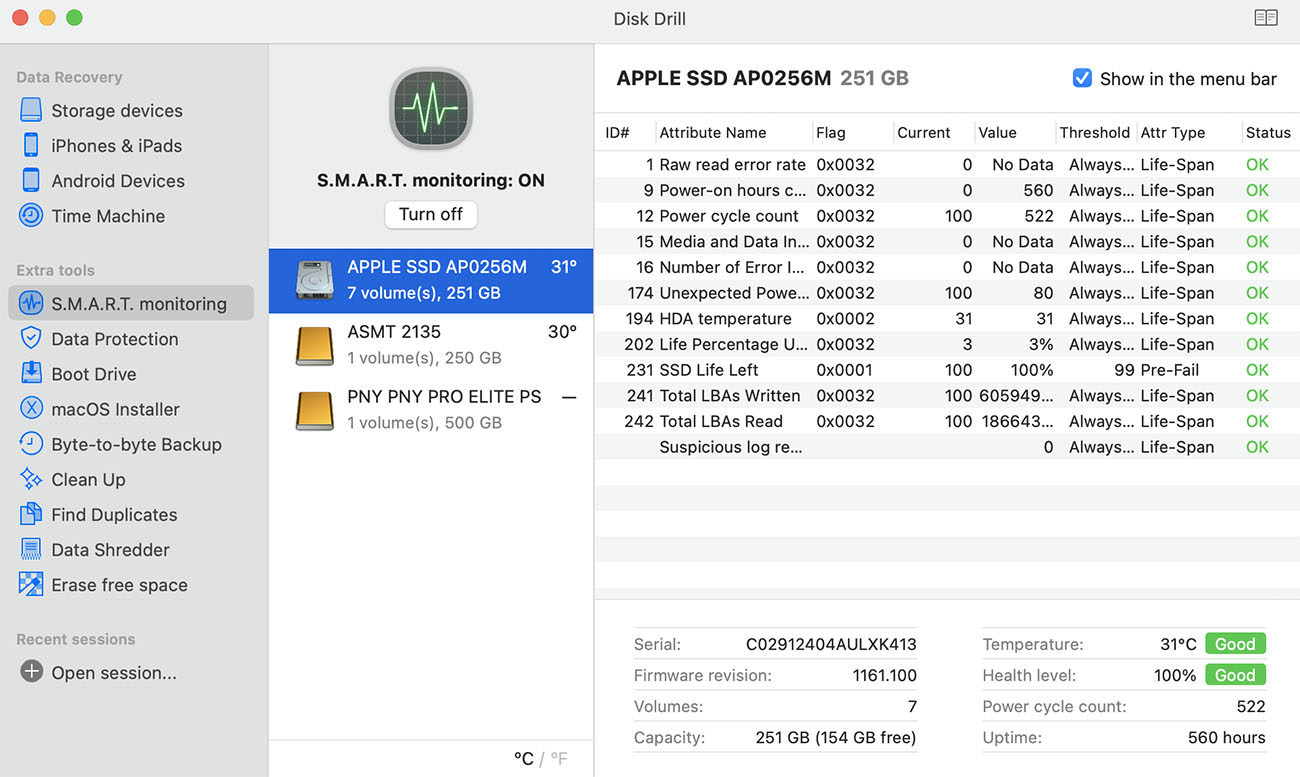
- Look at the health level of the hard drive and its overall S.M.A.R.T. status.
- (Optional) Click the Check all S.M.A.R.T. attributes button for more information about the hard drive.
We recommend you check the status of your hard drives at least once a month otherwise you most likely wouldn't be able to notice early signs of failure.
FAQ
If you've accidentally formatted a hard disk with important data, then you need to use a data recovery software solution like Disk Drill to scan it and retrieve the lost files. Keep in mind that your data can be recovered only until it becomes overwritten, so act quickly and don't write any new data to the formatted hard disk.
Recovering data from a formatted hard disk on Mac is easy thanks to data recovery applications like Disk Drill:
- Download and install Disk Drill.
- Launch it and scan the formatted hard disk.
- Recover your data.
Recovering data from a formatted external hard drive is just as straightforward as recovering formatted internal hard drives. The trick is to begin the data recovery process before the deleted data become overwritten and use a reliable data recovery software application.

Arthur Cole
Arthur Cole is a freelance content creator. He also has a more than 10-year experience in program development for macOS, Windows, iOS, Android.Arthur Cole is a writer with deep expertise in programming, who can easily...
Read full bio
Arthur Cole is a freelance content creator. He also has a more than 10-year experience in program development for macOS, Windows, iOS, Android.Arthur Cole is a writer with deep expertise in programming, who can easily...
Read full bio

This article has been approved by Brett Johnson, Data Recovery Engineer at ACE Data Recovery. Brett has a Bachelor's Degree in Computer Systems and Network, 12 years of experience.
This article has been approved by Brett Johnson, Data Recovery Engineer at ACE Data Recovery. Brett has a Bachelor's Degree in Computer Systems and Network, 12 years of experience.
Can You Roll Back a Drive Format on Ssd
Source: https://www.cleverfiles.com/howto/recover-formatted-hdd.html
Belum ada Komentar untuk "Can You Roll Back a Drive Format on Ssd"
Posting Komentar